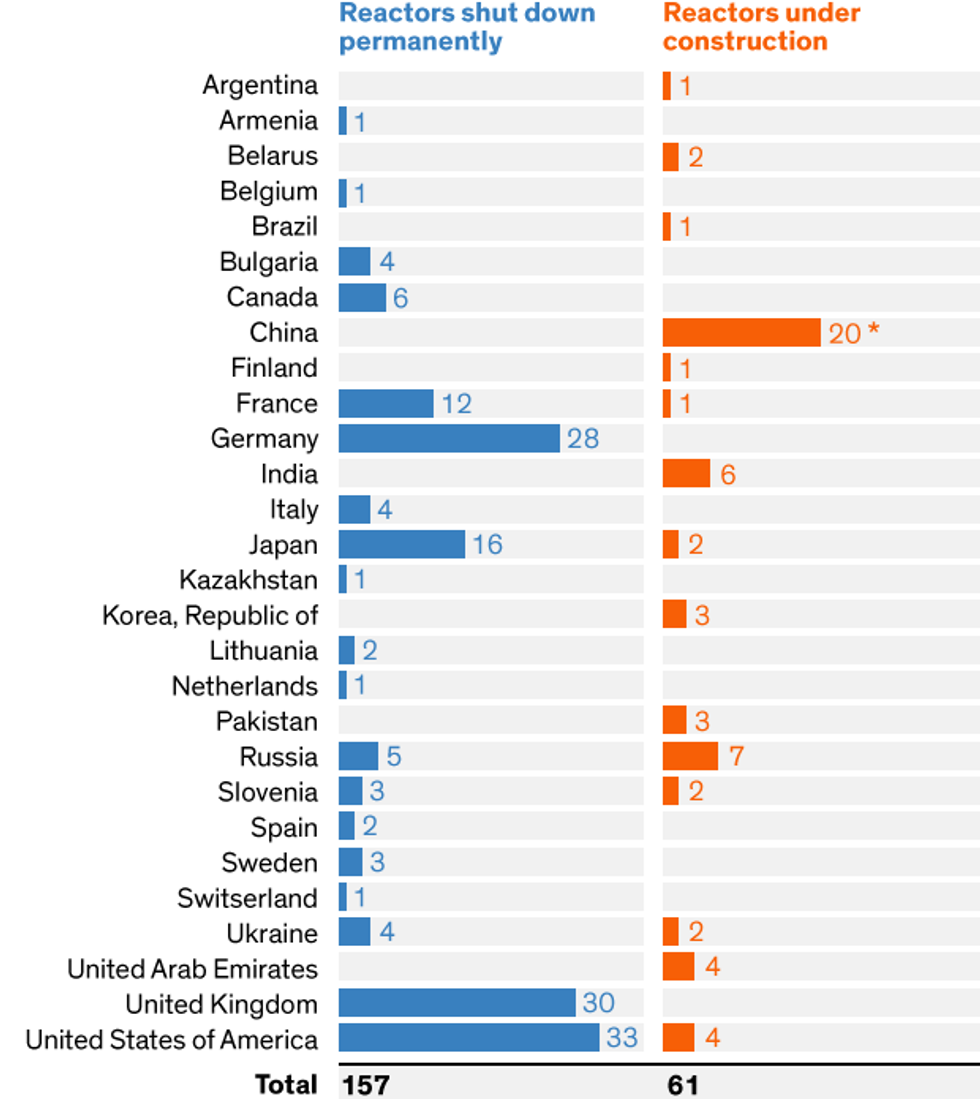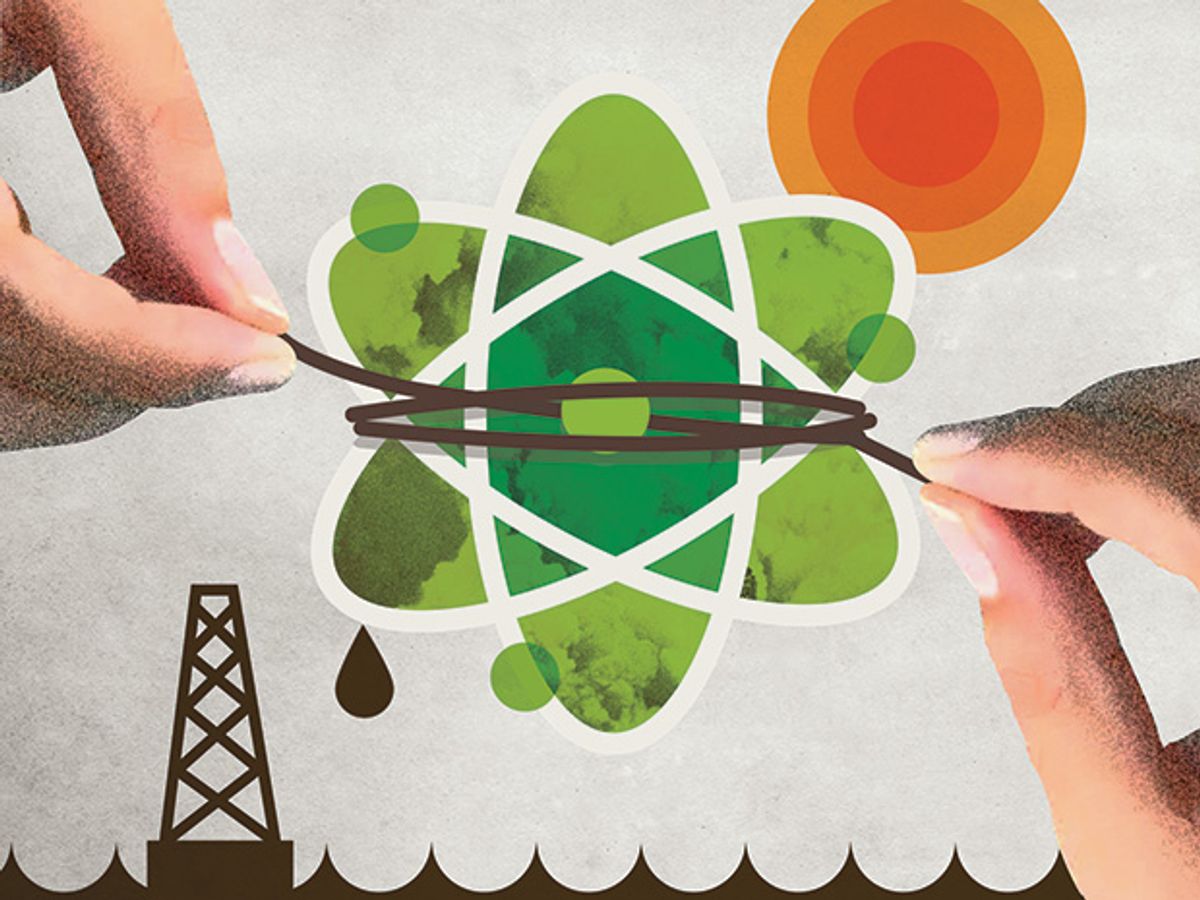The age of commercial nuclear electricity generation began on 17 October 1956, when Queen Elizabeth II switched on Calder Hall, on the Cumberland coast of England. Sixty years is long enough to judge the technology, and I still cannot improve on my evaluation from about 10 years ago: a “successful failure.”
The success part is well documented. After a slow start, reactor construction began to accelerate during the late 1960s, and by 1977 more than 10 percent of U.S. electricity came from fission, rising to 20 percent by 1991. That was a faster penetration of the market than photovoltaics and wind turbines have managed since the 1990s.
Today the world has 448 reactors, many with capacity factors of better than 90 percent. That’s the share of the reactors’ potential output that they averaged year-round, producing more than twice as much electricity as PV cells and wind turbines combined. Nuclear power provided the highest share of electricity in France (77 percent), but Swiss reactors contributed 38 percent and South Korea got 30 percent, as did Japan before Fukushima. The U.S. share remains at almost 20 percent.
From Those Who Have, It Shall Be Taken Away

The failure part has to do with unmet expectations. The claim that nuclear electricity would be “too cheap to meter” is not apocryphal: That’s what Lewis L. Strauss, chairman of the U.S. Atomic Energy Commission in 1954, told the National Association of Science Writers in New York in September of that year. And equally audacious claims were still to come. In 1971, Glenn Seaborg, a Nobelist and chairman of the Atomic Energy Commission then, predicted that nuclear reactors would generate nearly all the world’s electricity by 2000. Seaborg envisioned giant coastal “nuplexes” desalinating sea water, geostationary satellites powered by compact nuclear reactors for broadcasting TV programs, nuclear-powered tankers, and nuclear explosives that would alter the flow of rivers and excavate underground cities. Meanwhile, nuclear propulsion would carry men to Mars.
The project to generate electricity from fission stalled during the 1980s, as demand for electricity in affluent economies fell and problems with nuclear power plants multiplied. And three failures were worrisome: Accidents at Three Mile Island in Pennsylvania, in 1979; at Chernobyl in Ukraine, in 1986; and at Fukushima in Japan, in 2011, provided further evidence for those opposed to fission under any circumstances.
Meanwhile, there have been cost overruns in the construction of nuclear plants and a frustrating inability to come up with an acceptable way to store spent nuclear fuel. Nor has there been much success in switching to reactors that might be safer and less expensive than the dominant design of pressurized water reactors, which are essentially beached versions of U.S. Navy submarine designs of the 1950s.
As a result, the Western public remains unconvinced, utilities are wary, Germany and Sweden are on the course of shutting down their entire industries, and even France plans to cut back. In August 2016, 61 reactors were under construction worldwide, too few to make up for the capacity that will be lost as aging reactors are shut down in coming years.
The only leading economies with major expansion plans are in Asia, led by China, South Korea, and India, but even they can’t do much to reverse the decline in the share of nuclear power in worldwide electricity generation. That share peaked at nearly 18 percent in 1996, fell to 11 percent in 2015, and is expected to bump up to just 12 percent by 2040, according to the International Energy Agency.
There are many things we could do—above all, use better reactor designs and act resolutely on waste storage—to generate a significant share of electricity from nuclear fission and so limit carbon emissions. But that would require an unbiased examination of the facts and a truly long-range approach to global energy policy. I see no real signs of that.
This article appears in the October 2016 print issue as “Nuclear Electricity: A Successful Failure.”
